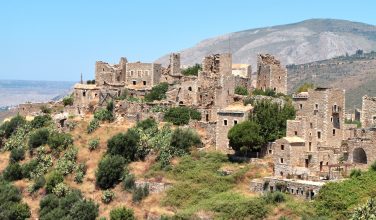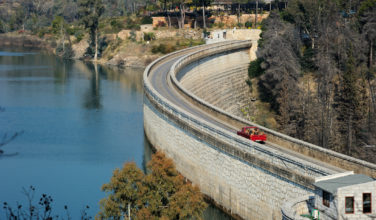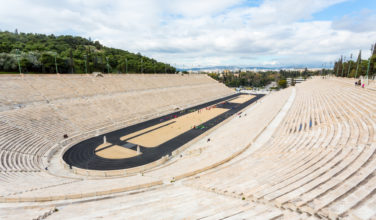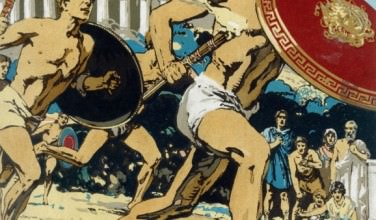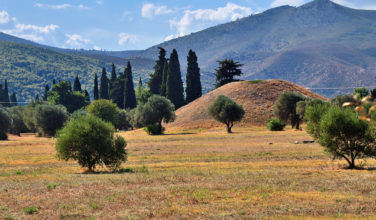Marathon is a town in Greece. The name “Marathon” comes from the herb fennel, which was called marathon or marathos in Ancient Greek. Because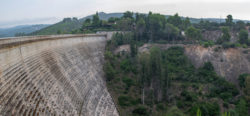 the area is so abundant in fennel, the name Marathon, which means “a place full of fennels” fits perfectly.
the area is so abundant in fennel, the name Marathon, which means “a place full of fennels” fits perfectly.
Ancient Marathon was a small plain in the northeast of ancient Attica, which contained four areas: Marathon, Probalinthus, Tricorythus, and Oenoe. They formed the Tetrapolis, one of the 12 districts Attica was divided into. After Theseus united the 12 districts, they became one state and the name of Tetrapolis was no longer used. The four areas of this new state would be: Attic demi, Marathon, Tricorythus, and Oenoe. Marathon would be the most important of the four and its name would be applied to the district.
In Greek mythology, it was here that Xuthus is said to have reigned and where the Heracleidae (descendants of Heracles) took refuge after being driven out of Peloponnesus. The Marathonii claimed to be the first people in Greece who paid divine honors to Heracles, who had a sanctuary in the plain. Marathon is also where legend says Theseus conquered a ferocious bull who until then devastated the plain.
In 490 BC, Marathon was the site of the Battle of Marathon. The outnumbered Athenian army would defeat the Persians. Legend says that Pheidippides, a Greek herald, was sent running from Marathon to Athens to tell of the victory. This inspired the idea of marathon running during modern times.
In 1926, construction began on the Marathon Dam to make sure adequate water supply to Athens. Approximately 10 km² of forested land was flooded to create Lake Marathon. Construction of the dam was completed in 1929.
Administrative Region for Marathon, Greece
Attica
Area of Marathon, Greece
Municipality: 222.75 km2 (86.00 sq mi)
Municipal Unity: 97.06 km2 (37.48 sq mi)
Population of Marathon, Greece
Municipality: 33,423
Municipal Unit: 12,849
Top Attractions in Marathon, Greece
Schinias Beach – Just outside of Marathon is Schinias Beach. This a long and sandy beach with beach bars and pine groves behind it. This beach features lifeguards, free parking, and showers. A good beach for windsurfing.
Attica Zoological Park – This 32-acre zoo is home to more than 2,000 animals, 30 types of reptiles, 238 species of birds, and more. The zoo is accessible from the airport or coming from the Eleusis area. Get there by bus or taxi.
Lake Marathon – This man-made reservoir was formed for the Marathon Dam. The dam is the only marble-faced one in the world. When you’re done exploring the area is a restaurant on the east side of the dam.
Marathon Run Museum – A permanent exhibition of the “Olympic Marathon” from 1896 to the present. More than 4000 exhibits record the history of Marathon race. The museum features medals, athletic and personal items of Harilaos Vasilakos, the first winner of the Marathon in 1896, cups, relics, and so much more.
The Tymbos of Marathon – This is a vaulted tomb where 192 Athenian soldiers who died during the Marathon Battle are buried. The monument is also known as “Soros.” The tomb is 9 meters tall and 50 meters in diameter. Next to the tomb there is a statue of Miltiades, the general of the army during the battle.
Marathon Beach – A long beach along the Marathon Gulf. Water sports, beach bars, and taverns are available at Marathon Beach. You can even rent bikes and cycle along the beach.
St. Ephraim Monastery – Located in Nea Makri. This is one of the oldest monasteries of Athens, dating back to the 10th century. In 1950, excavations would find half of a fireplace, a wall, and cell of a monk. The body of St. Ephraim was also found, as he had been buried there.
Archaeological Museum of Marathon – This museum was built in 1975 and is located near the memorial tomb of the Battle of Marathon. The museum consists of five halls, each with its own theme. Collections include: pottery from the early Cycladic, Geometric, and Classical period, statues, and other finds from excavations.
Sanctuary of the Egyptian Gods – Founded in 160 AD by Herodes Atticus. Excavations revealed a complex of the Egyptian Gods, a bath house, and a large ellipsoidal cistern. Located by the sea and in front of a church, it’s well-worth a visit.
Ramnous Ruins – Located 10 km northeast of Marathon, these ruins sit on a plateau overlooking the sea. These ruins are of the ancient port of Ramnous. Among the ruins are the remains of the Doric Temple of Nemesis.


